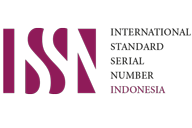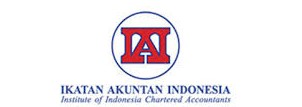Pengaruh Identitas Profesional, Locus of Commitment, Bystander Effect, dan Self Efficacy terhadap Niat Melakukan Whistleblowing
Abstract
The aim of this research was to investigate how professional identity, locus of commitment, the bystander effect, and self-efficacy influence the intention to whistleblowing. This study builds on Taylor and Curtis (2010) application of the Theory of Planned Behavior (TPB) as its theoretical foundation. It employs a purposive sampling method, targeting respondents employed within regional working units (SKPD) in Sawahlunto City. Respondents consisted of employees who served as the Budget User Authorizations, Budget Makers, Budget Section Head, Commitment Making Officers, Pay Order Signing Officers, Head of Finance, Financial Administration Officers, Activity Technical Implementation Officers, Expenditures Treasurer, Treasurer of Goods, and Finance Staff. The data for this research was gathered through primary methods, using structured questionnaires distributed to 26 regional working units in Sawahlunto City. Hypothesis testing was conducted using IBM SPSS Statistics 25 software. The findings of the study reveal that: (1) Professional Identity not significant influence whistleblowing intention; (2) Locus of commitment positively significant influence whistleblowing intention; (3) Bystander effect not significant influence whistleblowing intention; (4) Self efficacy positively significant influence whistleblowing intention.
References
Abdullah, M. W., & Hasma, H. (2017). Determinan intensi auditor melakukan tindakan whistle-blowing dengan perlindungan hukum sebagai variabel moderasi. EKUITAS (Jurnal Ekonomi Dan Keuangan), 1(3), 385–407.
Ajzen, I. (1991). The Theory of Planned Behavior. Organizational Behavior and Human Decision Processes, 50(2), 179–211.
Ajzen, I., & Fishbein, M. (1980). Understanding attitudes and predicting social behavior. Englewood Cliffs, NJ: Prentice.Hall.
Al Shbail, M., & Al Shbail, A. (2020). Internal Auditors and Internal Whistleblowing Intentions: Evidence From Jordan. International Journal of Academic Research in Accounting. Finance and Management Sciences, 10(2), 304–316.
Aranya, N., Pollock, J., & Amernic, J. (1981). An examination of professional commitment in public accounting. Accounting, Organizations and Society, 6(4), 271–280.
Asiah, N., & Rini, D. S. (2017). Pengaruh Bystander Effect dan Whistleblowing Terhadap Terjadinya Kecurangan Laporan Keuangan. Nominal Barometer Riset Akuntansi Dan Manajemen, 6(1), 109–123.
Asih, R., & Sari, R. C. (2021). Pengaruh Identitas Profesional, Komitmen Organisasi, dan Bystander Effect terhadap Niat Pengungkapan Kecurangan Akuntansi. Jurnal Profita: Kajian Ilmu Akuntansi, 9(1), 34–48.
Astrie, S. O. E., & Wahyono. (2015). Analisis Faktor-Faktor Yang Mempengaruhi Intensi Auditor Untuk Melakukan Tindakan Whistleblowing (Studi Pada Kantor Akuntan Publik Di Surakarta Dan Yogyakarta). Universitas Muhammadiyah Surakarta.
Azka, A., Surya, R. A. S., & Zarefar, A. (2019). Pengaruh Bystander Effect, Reporting Channel Administration, Percieved Personal Responsibility Dan Perceived Serousness Terhadap Whistleblowing Intention. JOMFEKON, 6(1), 1–15.
Bandura, A. (1986). Social foundations of thought and action. Englewood Cliffs, NJ, 23–28.
Brink, A., Eller, C. K., & Gan, H. (2015). Reporting fraud: An examination of the bystander effect and evidence strength. In Advances in Accounting Behavioral Research, 18, 125– 154.
Broberg, P., Umans, T., Skog, P., & Theodorsson, E. (2018). Auditors’ Professional and Organizational Identities and Commercialization In Audit Firms. . Accounting, Auditing & Accountability Journal, 31(2), 374–299.
Brody, R. G., Gupta, G., & White, T. (2020). Whistleblowing in India: Evidence From Accounting Students and Professionals. International Journal of Accounting & Information Management, 28 (1), 126–146.
Christyawan, A. F., & Hapsari, A. N. S. (2021). Whistleblowing Dan Alasan Mahasiswa Melakukannya. Journal of Economic, Bussines and Accounting (COSTING), 5(1), 423– 440.
Elias, R. (2008). Auditing students’ professional commitment and anticipatory socialization and their relationship to whistleblowing. Managerial Auditing Journal, 23(3), 283–294.
Feist, J., & Feist, G. J. (2010). Teori Kepribadian. Terjemahan. Essentials of Abnormal Pshycology (4th ed.).
Gao, J., Greenberg, R., & Wong-On-Wing, B. (2015). Whistleblowing intentions of lower- level employees: The effect of reporting channel, bystanders, and wrongdoer power status. Journal of Business Ethics, 126, 85–99.
Iqbal, M., Mukhtaruddin, M., & Abukosim, A. (2019). Pengaruh Identitas Profesional, Locus Of Commitment, Dan Intensitas Moral Terhadap Intensi Auditor Untuk Melakukan Tindakan Whistleblowing (Studi Kasus Pada Kantor Akuntan Publik Sumatera Bagian Selatan). AKUNTABILITAS: Jurnal Penelitian Dan Pengembangan Akuntansi, 12(1), 15–28. https://doi.org/10.29259/ja.v12i1.9305
Janitra, W. A. , H. H. , & W. M. (2017). Pengaruh Orientasi Etika, Komitmen Profesional, Komitmen Organisasi, Dan Sensitivitas Etis Terhadap Internal Whistleblowing (Studi Empiris Pada SKPD Kota Pekanbaru). Universitas Riau.
Jogiyanto, H. M. (2007). Sistem informasi keperilakuan (Vol. 235). Andi Offset.
Karim Emadudiena Zhilalil. (2022). Intensi Whistleblowing di Kalangan Mahasiswa Akuntansi. Universitas Islam Negeri Syarif Hidayatullah.
Kreshastuti, D. K., & Prastiwi, A. (2014). Analisis faktor-faktor yang mempengaruhi intensi auditor untuk melakukan tindakan whistleblowing (studi empiris pada kantor akuntan publik di semarang). Universitas Diponegoro.
Libriani, E. W., & Utami, I. (2015). Studi Eksperimental Tekanan dan Ketaatan dan Personal Cost: Dampaknya terhadap Whistleblowing. Jurnal Akuntansi Dan Bisnis, 15 (2), 106– 119.
Near, J. P., & Miceli, M. P. (1985). Organizational Dissidence: The Case of Whistle-Blowing.
Journal of Business Ethics, 4, 1–16.
Nurmarita, E. (2022). Niat Auditor Untuk Melakukan Whistleblowing Ditinjau Dari Theory Of Planned Behavior (Studi pada Kantor Akuntan Publik di Kota Malang). Universitas Negeri Malang.
Purwantini, A. H., Waharini, F. M., & Anisa, F. (2017). Analisis Determinasi Intensi Whistleblowing Internal: Studi pada Industri di Magelang. URECOL, 55–62.
Puspitosari, I. (2019). Whitleblowing Intention Sebagai Bagian dari Etika Islam Ditinjau dari Intensitas Moral, Orientasi Etika Relativisme dan Religiusitas. Jurnal Iqtisaduna, 5 (2), 139–152.
Putra, I. M. D. D., & Wirasedana, I. W. P. (2017). Pengaruh komitmen profesional, self efficacy, dan intensitas moral terhadap niat untuk melakukan whistleblowing. E-Jurnal Akuntansi, 21(2), 1488–1518.
Putra, N. D. (2020). Determinan Tindakan Whistleblowing oleh Akuntan. UNIVERSITAS MUHAMMADIYAH SURAKARTA.
Sanı, A. N., Salım, A. S., & Jaffar, N. (2022). The influences of self-efficacy, empathy, ethical leadership and power distance on whistleblowing intention. IBIMA Business Review, 1– 17.
Sarwono, S. W., & Meinarno, E. A. (2009). Psikologi Sosial. Raja Grafindo Persada. Schwarzer, R., & Jerusalem, M. (1995). Generalized self-efficacy scale. J. Weinman, S.
Wright, & M. Johnston, Measures in health psychology: A user’s portfolio. Causal and Control Beliefs, 35, 37.
Taylor, E. Z., & Curtis, M. B. (2010). An Examination Of The Layers Of Workplace Influences In Ethical Judgments: Whistleblowing Likelihood and Perseverance In Public Accounting. Journal of Business Ethics, 93, 21–37.
Wiener, Y. (1982). Commitment in Organizations: A normative view. Academy of Management Review, 7, 418–428.







.png)
.png)
